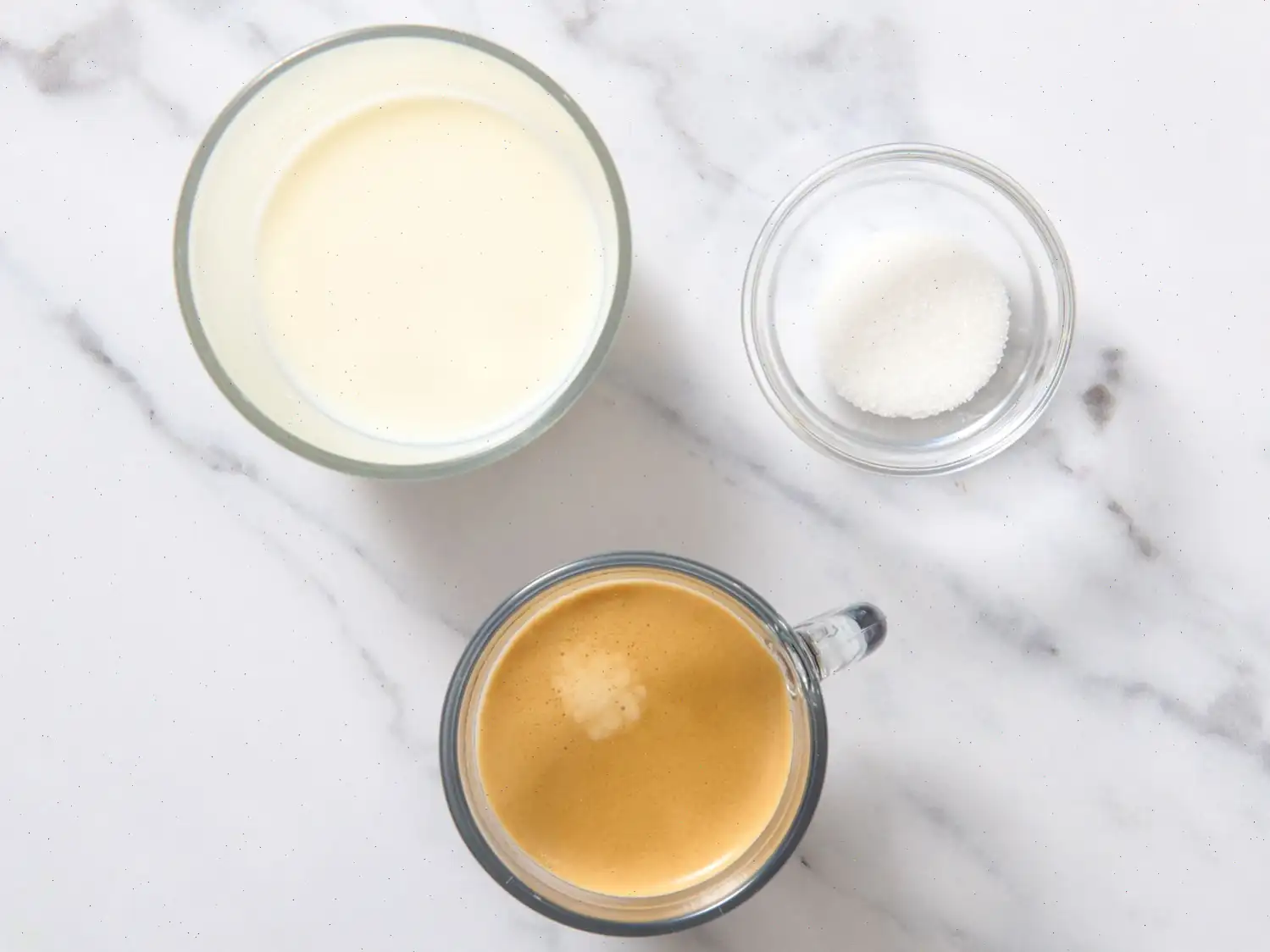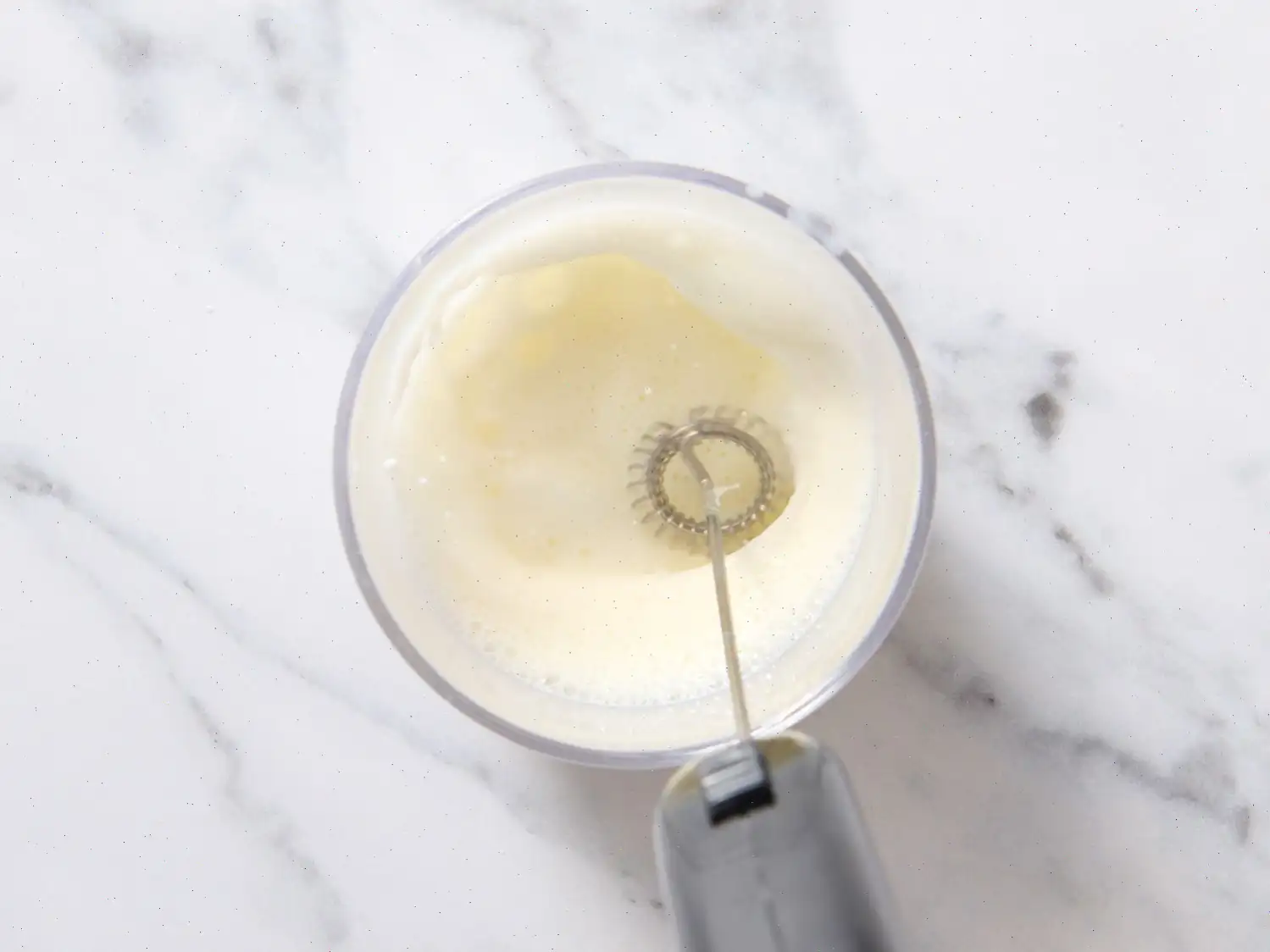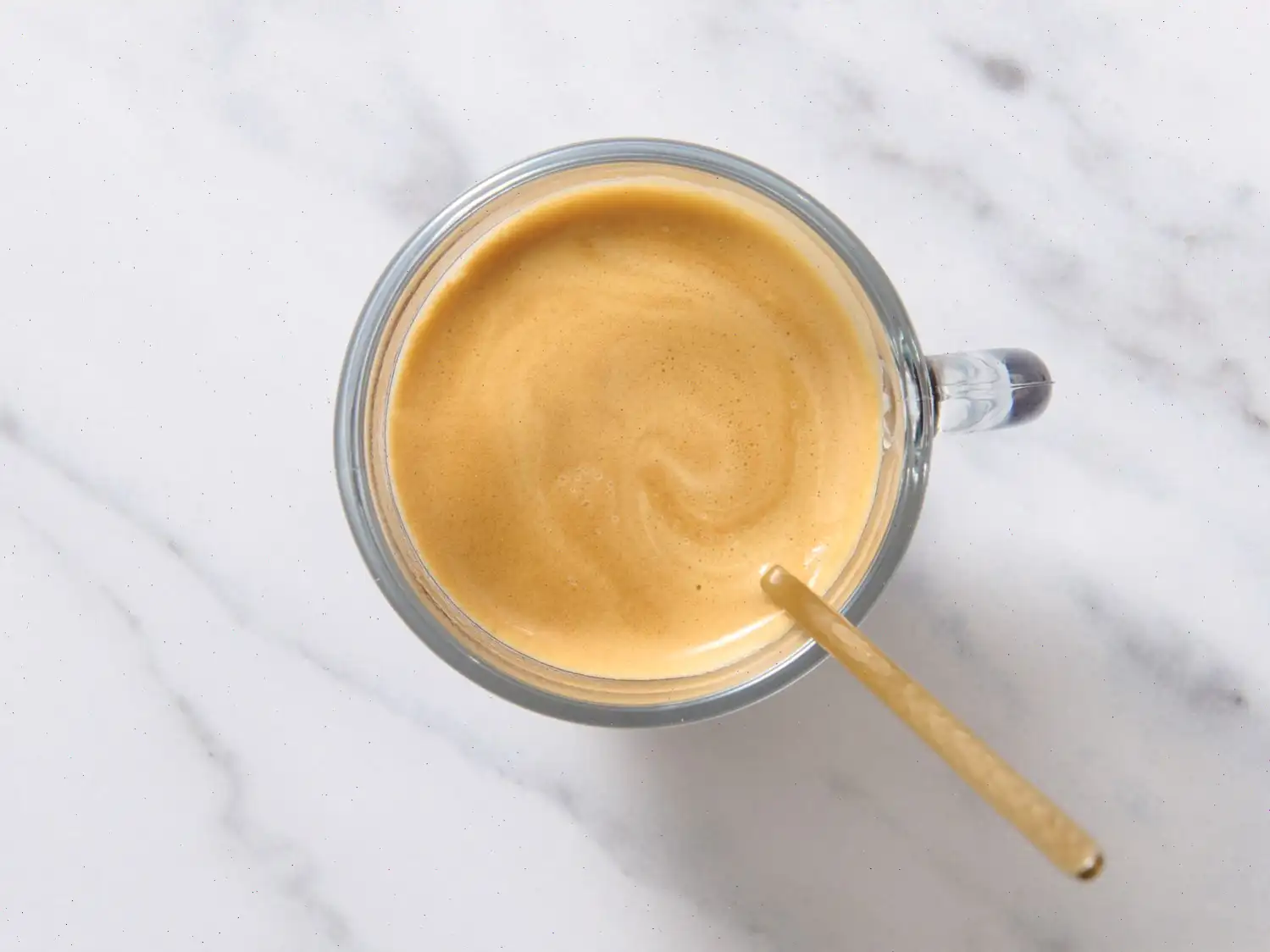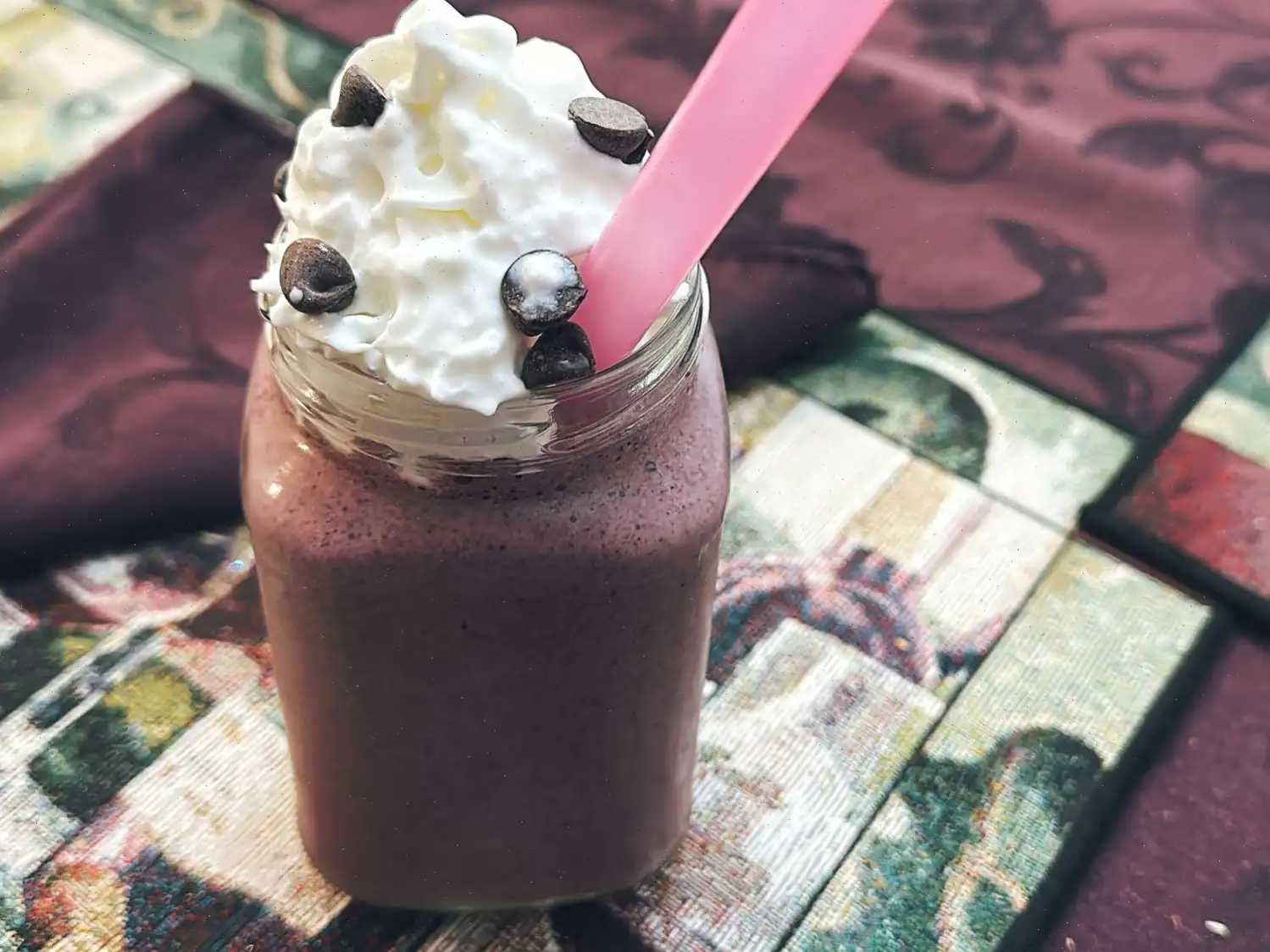
Freddo Cappuccino Recipe
Ingredients
- 2 shots of espresso
- Sugar to taste (optional)
- 1/3 cup cold skim milk
Directions
Start by gathering all the ingredients you will need for this refreshing drink.
First, brew two shots of espresso and stir in sugar until completely dissolved. Set the espresso aside to cool slightly.
Next, froth the cold skim milk using a handheld milk frother. Froth the milk in a cup until it doubles in volume and becomes nice and foamy, which should take around 60 seconds.
Recipe Tip: For perfect foam, check out our guide on How to Make Cold Foam.
Now, take a serving glass and fill it with ice cubes. Pour the prepared espresso over the ice, followed by the foamy milk.
Serve immediately with a straw and enjoy!
From the Editor: "For an extra authentic Greek touch, try topping your Freddo with a light dusting of cinnamon." Diana Moutsopoulos, Senior Editorial Director
Nutrition Facts (per serving)
| Calories | 35 |
| Total Fat | 0g |
| Saturated Fat | 0g |
| Cholesterol | 2mg |
| Sodium | 46mg |
| Total Carbohydrates | 5g |
| Dietary Fiber | 0g |
| Total Sugars | 4g |
| Protein | 3g |
| Calcium | 100mg |
| Iron | 0mg |
| Potassium | 223mg |
* Percent Daily Values are based on a 2,000 calorie diet. Your daily values may be higher or lower depending on your calorie needs.

The Origins of Freddo Cappuccino
The freddo cappuccino is a relatively modern invention in the world of coffee, originating in Greece during the late 20th century. As espresso culture spread across Europe, Greeks sought a refreshing version of the classic cappuccino to enjoy during the hot summer months. Unlike the traditional Italian cappuccino, which is served hot, the freddo cappuccino incorporates chilled espresso and cold, frothy milk, creating a creamy yet invigorating beverage that quickly became a summer staple in Greece.
Regional Variations and Characteristics
In Greece, freddo cappuccino is prepared slightly differently depending on the caf and region. In Athens, it is common to serve it with a thick layer of microfoam made from skim milk, giving the drink a light and airy texture. In Thessaloniki and northern Greece, some cafs prefer a sweeter version, adding sugar to the espresso before frothing. Occasionally, vanilla or cinnamon is sprinkled on top, adding subtle aromatic notes. Despite these small variations, the defining feature of a Greek freddo cappuccino is always the combination of cold espresso and creamy foam served over ice.
Differences from Similar Drinks
While freddo cappuccino may appear similar to an iced latte or an iced coffee with milk, it is distinguished by its unique frothing technique and foam texture. Unlike an iced latte, where milk is simply poured over ice and espresso, the freddo cappuccino requires milk to be frothed until it doubles in volume, creating a dense, velvety layer of foam that rests atop the iced espresso. Compared to freddo espresso, which is just chilled espresso with ice and optionally sugar, the cappuccino variant is creamier and richer due to the milk foam.
Typical Settings for Serving
Freddo cappuccino is a ubiquitous presence in Greek cafs, often enjoyed in the morning or as an afternoon pick-me-up. It is commonly served in small, clear glasses to showcase the foam and ice, sometimes with a straw for easier sipping. Tourists and locals alike favor this beverage while sitting at outdoor terraces, enjoying a warm sunny day. It is less common to see it in fast-food chains, as the drink is typically associated with traditional or specialty coffee bars that prioritize quality and presentation.
Interesting Facts
One fun fact about freddo cappuccino is that it reflects the Greek love for coffee culture blended with practical adaptation to climatehot summers demand a cool version of a beloved hot drink. Another interesting detail is that the drink is sometimes prepared with non-dairy alternatives such as almond or oat milk in modern cafs, catering to dietary preferences. Additionally, the foam in a freddo cappuccino can be manipulated to create intricate latte art, despite the drink being cold, showcasing the skill of Greek baristas. Finally, it has gained international recognition as part of Greeces signature coffee innovations, inspiring variations in cafs across Europe and beyond.












